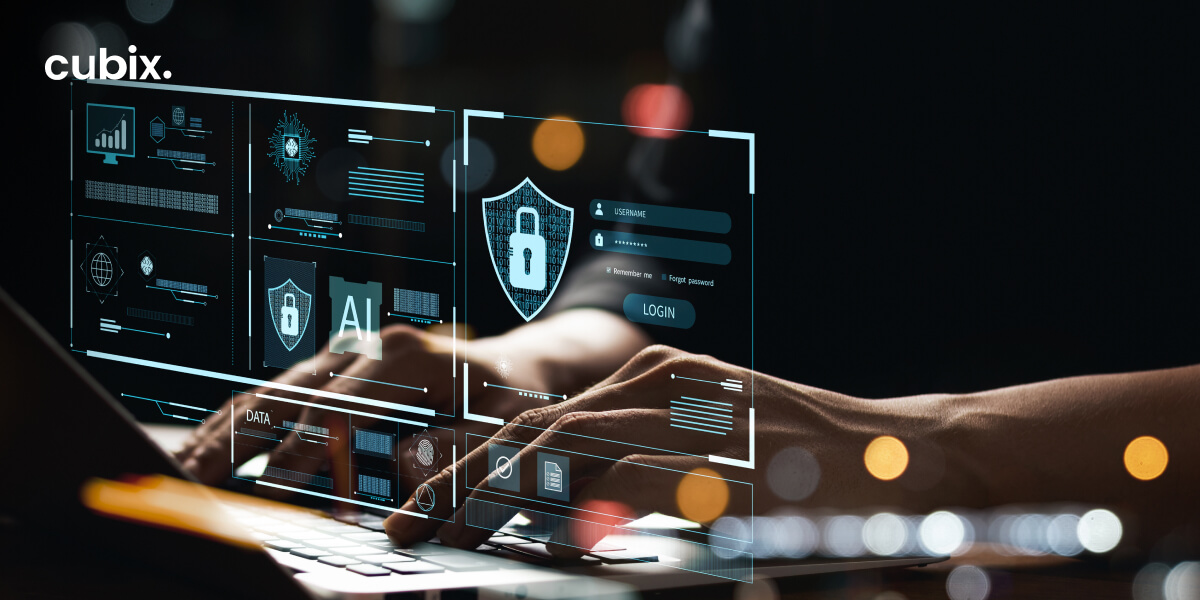Modern businesses rely heavily on enterprise applications. These applications enable organizations to enhance productivity, improve communication, and optimize processes. Hence, for a business to move steadily toward its objectives, a smooth functioning enterprise application is crucial.
Security remains one of the most foundational elements required to ensure smooth functioning of an enterprise application.
In this blog, we will explore the key considerations and best practices for developing secure and privacy-centric enterprise apps.
Securing the Endpoint: Device Protection
Securing the handheld device itself is paramount in successfully implementing an enterprise solution. Different operating systems require distinct approaches to strengthen device protection.
Securing Apps on iOS Devices: to secure enterprise apps running on iOS devices, employing a reliable mobile device management (MDM) or enterprise mobile management (EMM) solution is crucial.
MobileIron, AirWatch, MaaS360, and Good Technology offer comprehensive policy enforcement capabilities, allowing organizations to control various aspects of device usage.
Securing Android Devices: to add a layer of protection around enterprise apps, organizations can utilize Android for Work (A4W) – which provides enhanced protection via device encryption and allows the user to create separate, managed profiles for personal and professional use.
Implementing A4W, coupled with MDM, ensures the first level of security for your enterprise apps.
Wrapping Your Apps: Creating a Sandbox
App wrapping is a valuable technique that isolates the application within a protected environment, separating it from the rest of the device. This method, supported by top MDM providers, offers a quick solution to segment apps without requiring extensive coding.
Though effective for addressing specific business needs, has limitations, such as the inability to share authentication credentials within the wrapped app.
App Authentication: Simplifying with Single Sign-On
Authenticating users within enterprise apps can be a complex task as overly aggressive authentication measures may hamper user experience. Single sign-on (SSO) solutions provide a convenient and safe way to verify user identities.
While VPNs and Security Assertion Markup Language (SAML) can be used for SSO, OAuth 2.0 has emerged as a practical and widely supported solution.
Vendors such as Azure AD, Ping, and Okta offer OAuth 2.0 with two-factor authentication, ensuring robust safety by combining something the user knows (password) with something they have (e.g., mobile phone PIN or fingerprint).
Development-Level Security: Hardening the OS
Protective measures must extend to the operating system (OS) level to fortify enterprise app development services. Apple's iOS has a strong track record in enforcing protection, with regular updates and comprehensive guidelines available for developers.
Securing iOS Apps
By regularly reviewing Apple's security guide, staying informed about the latest code samples, and performing static code analysis, organizations can ensure that their iOS apps adhere to the highest security standards.
Securing Android Apps
Google offers enterprise-friendly tools. Android for Work, combined with Google's robust security models and the encryption of enterprise data, presents a compelling option for organizations.
Conducting thorough assessments of vendors’ capabilities and their history is crucial in determining their commitment to securing data.
Protecting Data Through APIs
Data protection encompasses not only the transmission but also the storage of information. Application Programming Interfaces (APIs) play a vital role in managing data and business logic. To ensure the safety of data in transit, employing SSL with 256-bit encryption is essential.
However, securing data at rest requires additional measures. Implementing app-level authentication for each API, validating users' identities, and limiting sensitive data to memory are effective strategies. Device encryption further safeguards data integrity.
Evaluating Vendor Trustworthiness
Selecting reliable vendors for enterprise app development is critical for ensuring safety and privacy. Thoroughly reviewing privacy policies and terms of use is essential to identify any unclear or vague language.
Vendors who are transparent and responsive to questions regarding their data collection policies inspire greater trust. Assessing the capabilities of the vendor to meet your required safety standards is vital.
Examining their commitment to cybersecurity and evaluating any past issues helps organizations make informed decisions. In some cases, open-source code availability allows prospective clients to evaluate an application's adherence to privacy claims.
Managing Unauthorized Applications
Unauthorized apps present a significant risk to enterprise apps. With the rise of remote work and the use of personal devices, employees often access enterprise data through unsecured consumer-focused applications like WhatsApp.
These applications lack robust protective capabilities and are more susceptible to breaches, potentially compromising user information and business accounts. Enforcing strict rules against BYOD and providing comprehensive cybersecurity training can mitigate these risks.
Conclusion
Developing secure and privacy-centric enterprise apps is essential for effectively managing an organization’s processes. Organizations must adopt a proactive mindset, leverage robust protective measures, and carefully select trustworthy vendors.
Prioritizing protection and privacy while going for enterprise app development ensures that organizations can reap the benefits of these powerful tools while maintaining the integrity of their data.
To create an enterprise app that is tailored to your requirements with all the security measures being taken care of, partner with Cubix – a reputable enterprise app development company.

